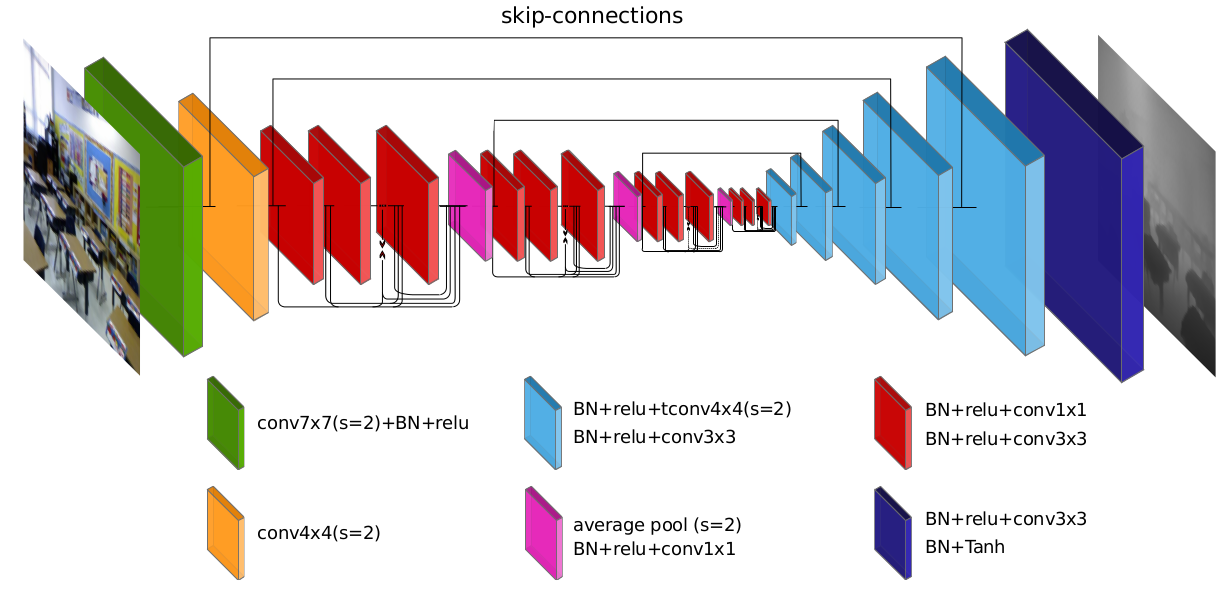Deep Depth from Defocus: how can defocus blur improve 3D estimation using dense neural networks?
Depth estimation is of critical interest for scene understanding and accurate 3D reconstruction. Most recent approaches in depth estimation with deep learning exploit geometrical structures of standard sharp images to predict corresponding depth maps. However, cameras can also produce images with defocus blur depending on the depth of the objects and camera settings. Hence, these features may represent an important hint for learning to predict depth. In this paper, we propose a full system for single-image depth prediction in the wild using depth-from-defocus and neural networks. We carry out thorough experiments to test deep convolutional networks on real and simulated defocused images using a realistic model of blur variation with respect to depth. We also investigate the influence of blur on depth prediction observing model uncertainty with a Bayesian neural network approach. From these studies, we show that out-of-focus blur greatly improves the depth-prediction network performances. Furthermore, we transfer the ability learned on a synthetic, indoor dataset to real, indoor and outdoor images. For this purpose, we present a new dataset containing real all-focus and defocused images from a Digital Single-Lens Reflex (DSLR) camera, paired with ground truth depth maps obtained with an active 3D sensor for indoor scenes. The proposed approach is successfully validated on both this new dataset and standard ones as NYUv2 or Depth-in-the-Wild. Code and new datasets are available at https://github.com/marcelampc/d3net_depth_estimation
PDF Abstract




 Indoor and outdoor DFD dataset
Indoor and outdoor DFD dataset
 NYUv2
NYUv2